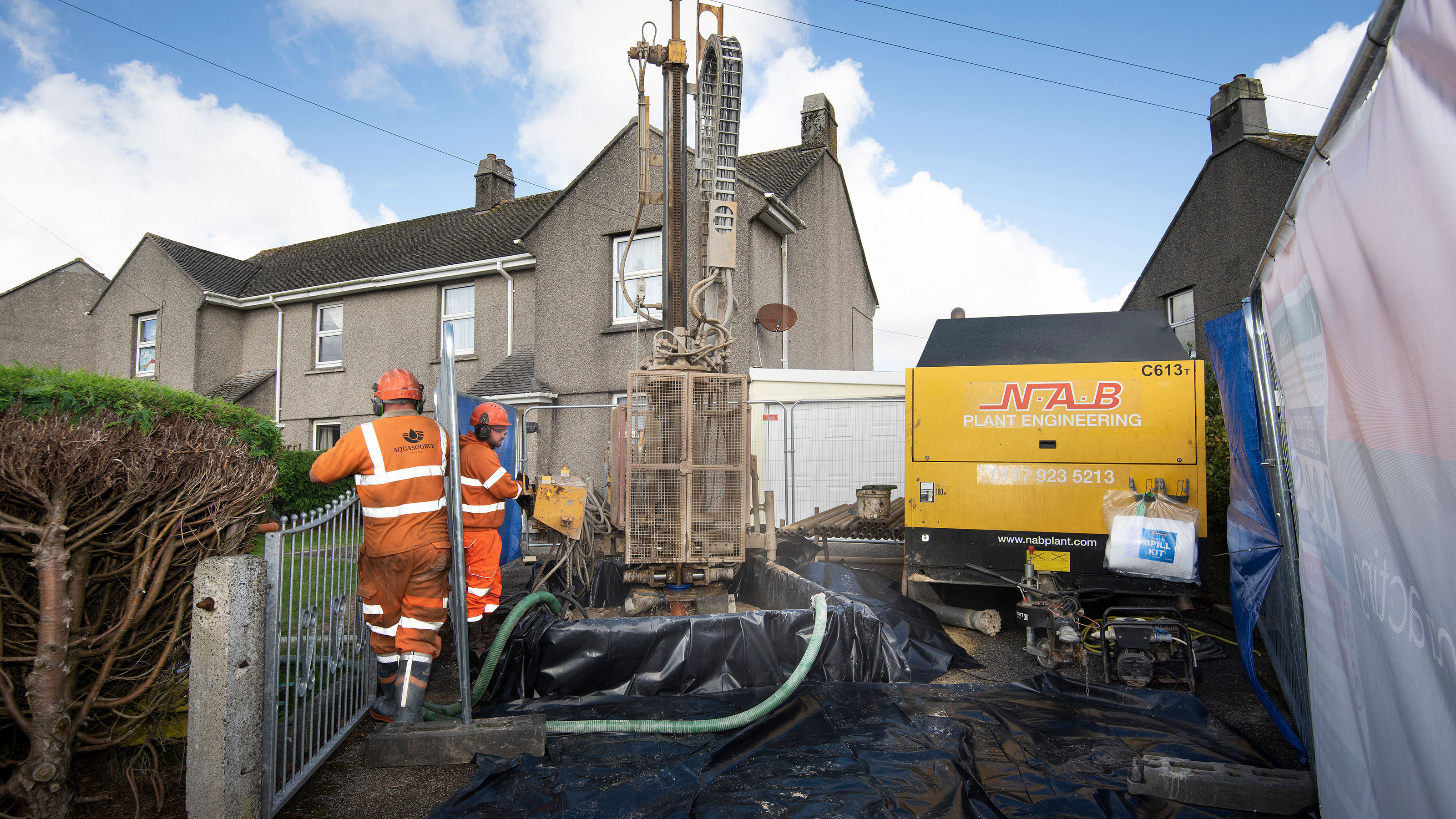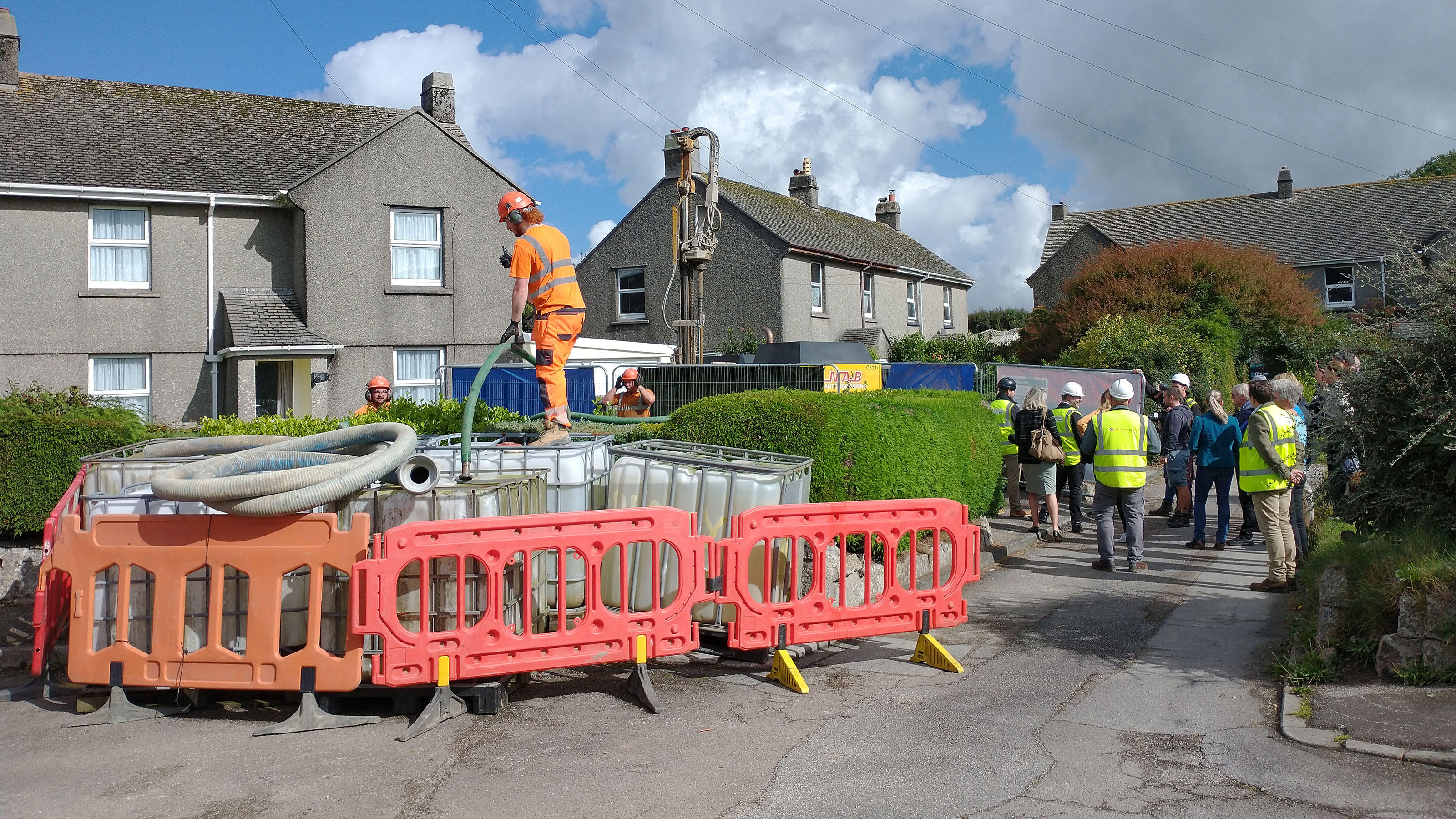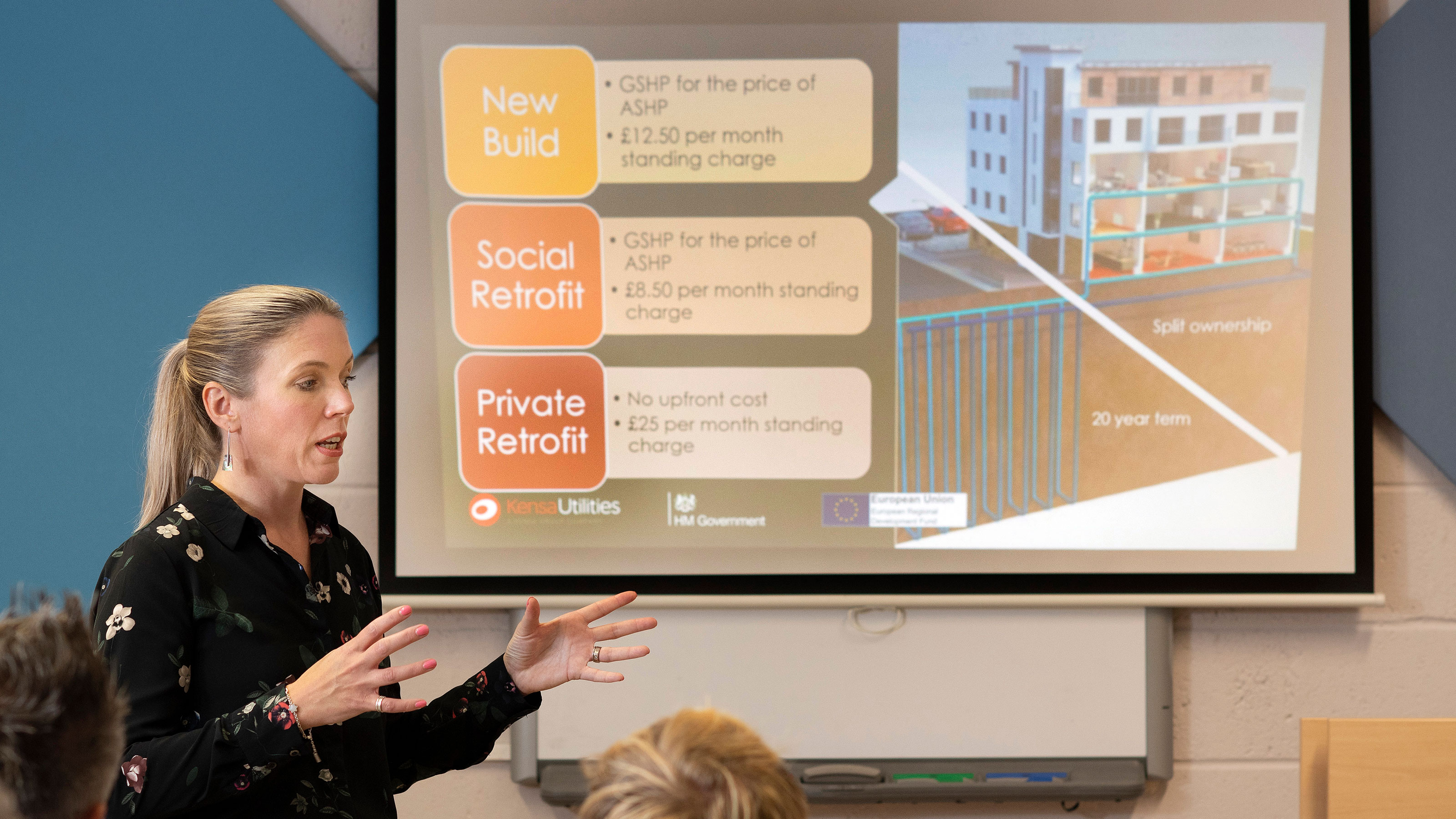Ground-breaking Heat the Streets scheme could make ground source heat pumps more accessible
'National-first' Heat the Streets scheme intends to show how communal ground source heating could replace the mains gas — and make heat pumps more affordable

Heat the Streets, a 'National-first' renewable heating project, has launched in the UK to demonstrate how community ground source heating could not only help homeowners save money on their energy bills, but be a scalable alternative to mains gas.
Heat the Streets is a pilot project from Kensa Utilities, based in Cornwall, in which Kensa ground source heat pumps will be installed into the homes of local residents for little or no upfront cost.
Typically a ground source heat pump is connected to single ground array, which takes heat from the surrounding earth for use in the heat pump (and, in turn, the property). This scheme, however, will see multiple ground arrays connected to a shared ground loop array.
"Mimicking a traditional gas framework, a series of ground arrays, typically boreholes, are linked together to form a shared ground loop array acting as a heat energy source to multiple properties," explains Kensa.
Kensa hopes the project will showcase the value of split ownership, community ground source heating, which is intended to make reliable heating affordable for more households.
Lisa Treseder, Kensa Utilities’ Director of Business Development, said of the scheme: "The ground array represents over a third of the cost of a ground source heating system. By splitting out this system cost, Kensa will make ground source heating more accessible to British households. We hope that this infrastructure will eventually take the place of the UK’s gas network."
What is Heat the Streets?
Heat the Streets in Stithians is a national first, the first time a cost-effective way has been demonstrated to achieve the UK’s net-zero targets for heating existing housing stock
Lord Matthew Taylor, Kensa Group
Around 14% of the UK’s carbon emissions come from heating our homes, according to the Climate Change Committee. Heat the Streets is intended to help break down the barriers to net zero and make clean, reliable heating affordable for more households.
Bring your dream home to life with expert advice, how to guides and design inspiration. Sign up for our newsletter and get two free tickets to a Homebuilding & Renovating Show near you.
It is an £8.7m project – part-funded from a £6.2m grant from the European Regional Development Fund – designed to demonstrate how a network of ground source heat arrays could be used not just to enable mass heat pump deployment but also to replace the gas mains.
Around 250 homes are expected to benefit from the scheme and the heat pumps will reduce the carbon output of each home by around 70%. Moreover, the heat pumps will mean cheaper bills for homeowners, especially those in the area which rely on oil for heating, Kensa says.
The scheme officially launched in September at Stithians Village – which will host the first stage of the project – by Lord Matthew Taylor, a non-executive chairman for the Kensa Group who has advised governments on how planning and housing policy can better support sustainable forms of development.

“Heat the Streets in Stithians is a national first, the first time a cost-effective way has been demonstrated to achieve the UK’s net-zero targets for heating existing housing stock," Lord Taylor said.
"Already delivering the lowest running costs for heating homes of any system, Kensa’s model of a ‘street main’ for ground source heat to enable affordable zero carbon heating for every home in the street is the world’s first."
Treseder said of the scheme: “The ground array infrastructure serving ground source heat pumps has a lifespan of around 100 years making it ideal for split ownership and long-term investment."
The government has a target that by 2028, 600,000 heat pumps will be installed in homes per year, but the majority of homeowners aren't yet convinced by heat pumps, according to a study from earlier in 2022. One of the main deterrents for homeowners is cost.
“Kensa wants clean, efficient, renewable heating to be accessible to everyone. That is why this ambitious project is the first to offer high value, low-carbon technology to households of any tenure, street-by-street,” the company says.

How does the Heat the Streets scheme work?
Heat the Streets will run for two years and is aiming for more than 250 households to switch to a ground source heat pump, worth around £23,000, which will be installed alongside new radiators, a hot water cylinder and a smart thermostat.
Installing a ground source heat pump can cost up to £20,000 or more depending on the size of a property, and while the government's Boiler Upgrade Scheme offers £6,000 towards the upfront cost, the cost can be a deterrent to homeowners.
Once a Stithians homeowner has the heat pump installed and connected they will pay £300 a year for their connection. Kensa says the standing charge is £25 per month for a period of 20 years (capped at 5% per annum), based on a fuel cost of £0.34 per kWh and a heat cost of £0.105 per kWh.
Kensa says that homeowners will maintain the flexibility to switch energy suppliers, as you would have owning a gas boiler.
The heat pumps will be connected to a communal network of underground pipework, known as a shared ground loop array, that extracts renewable heat via boreholes which provide 100% of the homes’ heating and hot water all-year round.
What's next for the project?
Kensa plans to extend the project by creating communal grids of underground pipes to source heat. This means that homeowners could hook into the grids to benefit from low-carbon heating.
And providing more government funding can be obtained, Heat the Streets could be rolled out to other areas in Cornwall, project bosses say.
Jack has worked in journalism for over a decade and was the former News Editor of Homebuilding & Renovating between 2019 until 2023. In his time as News Editor he broke the most relevant and beneficial stories for self builders, extenders and renovators, including the latest news on the construction materials shortage, planning permission and green initiatives. In 2021 he appeared on BBC's The World at One to discuss the government's planning reforms.
He enjoys testing new tools and gadgets, and having bought his first home in 2013, he has renovated every room and recently finished a garden renovation.

